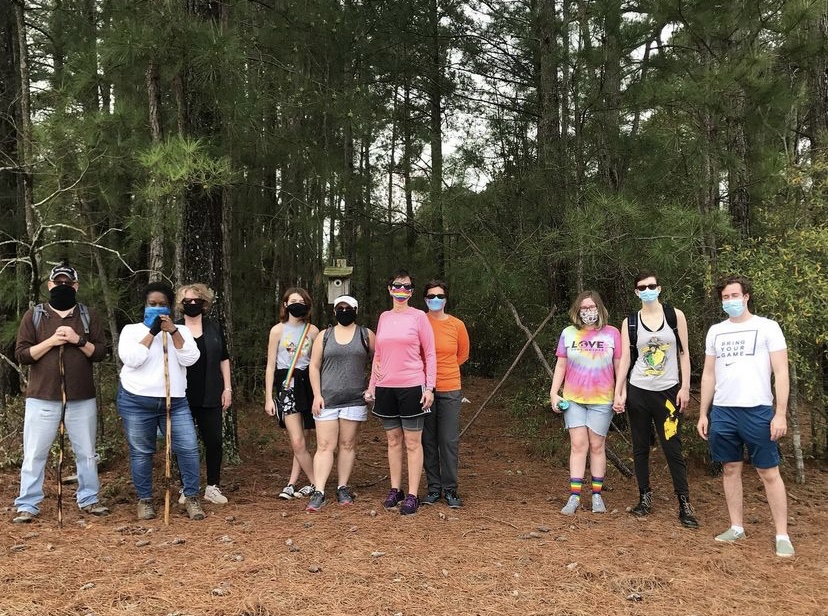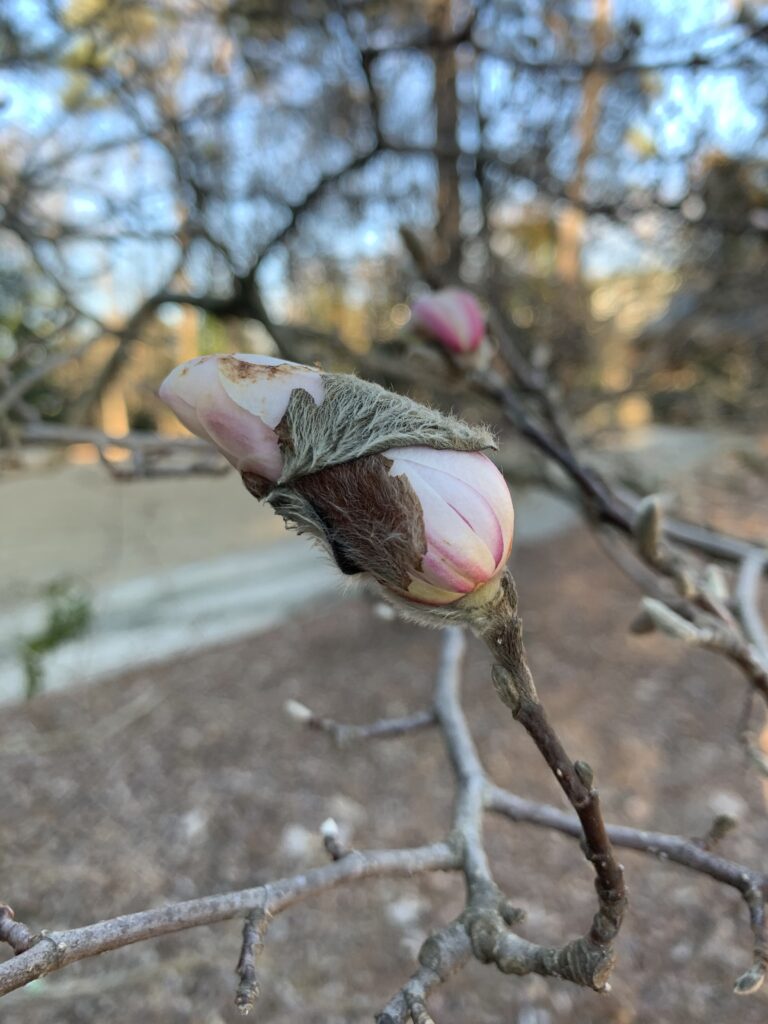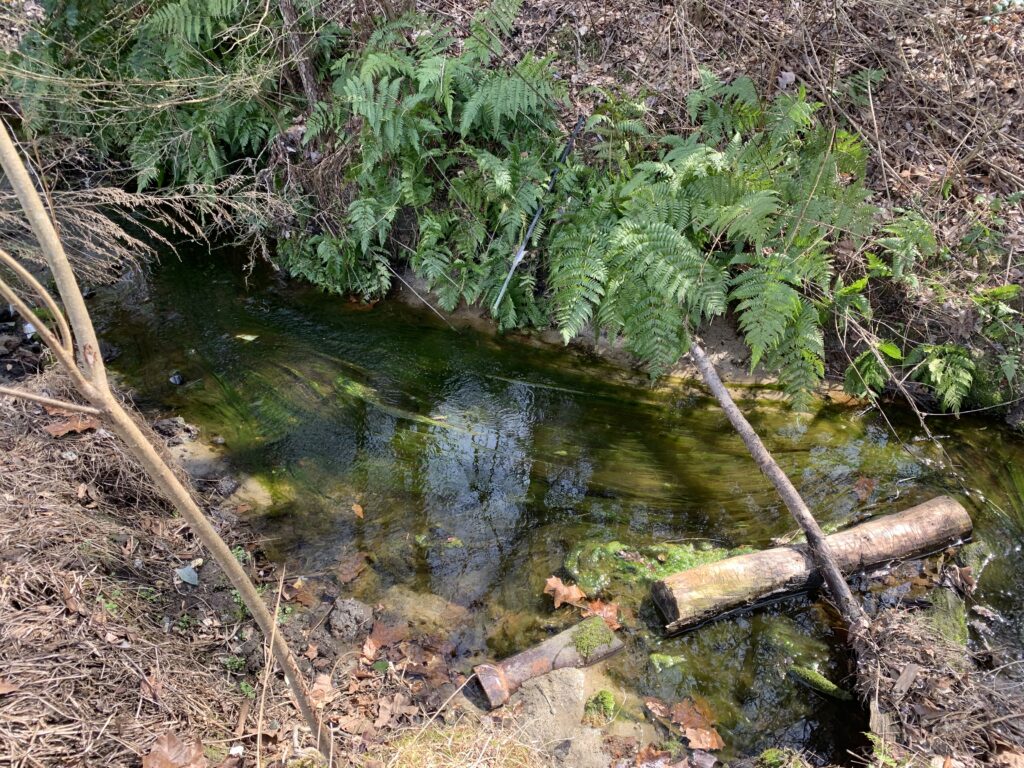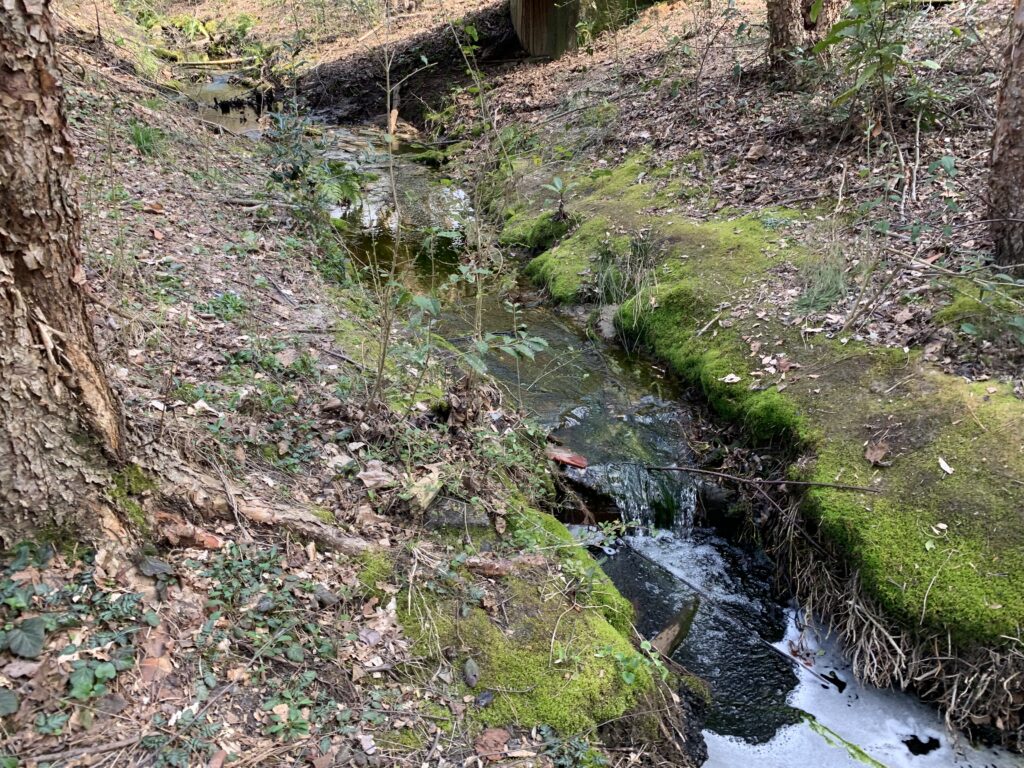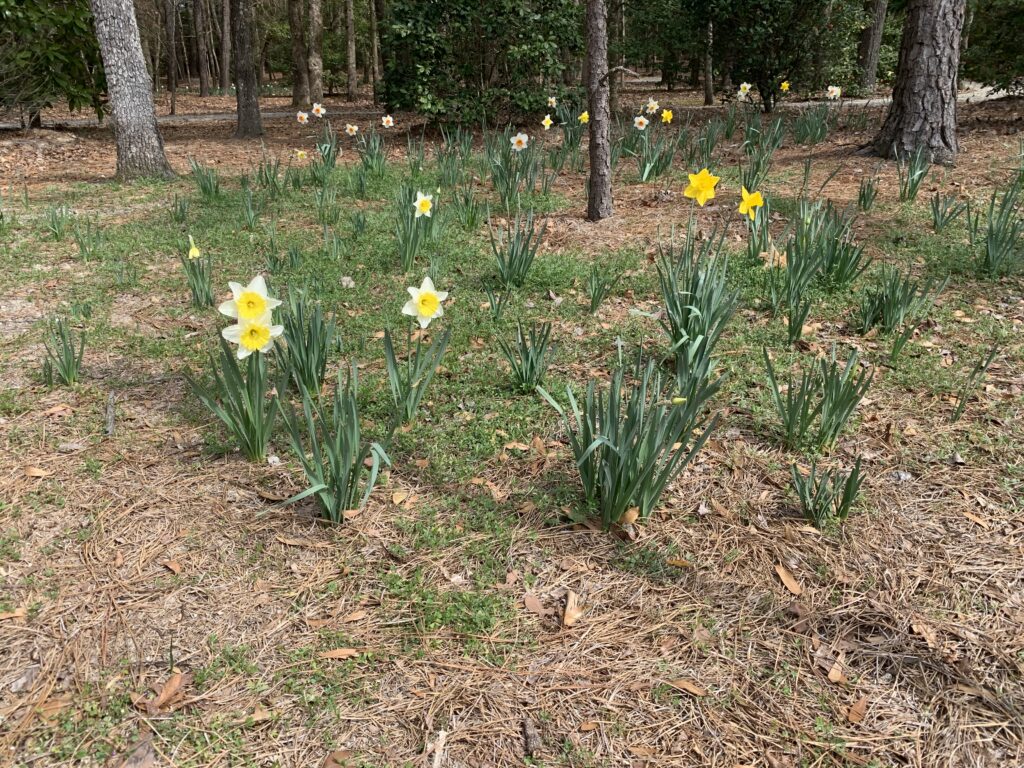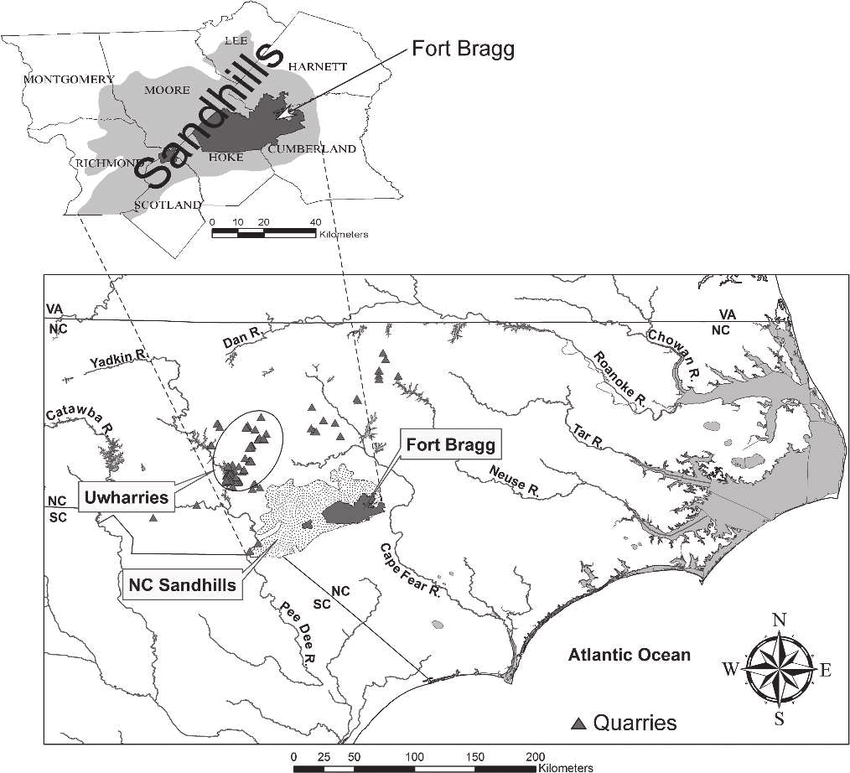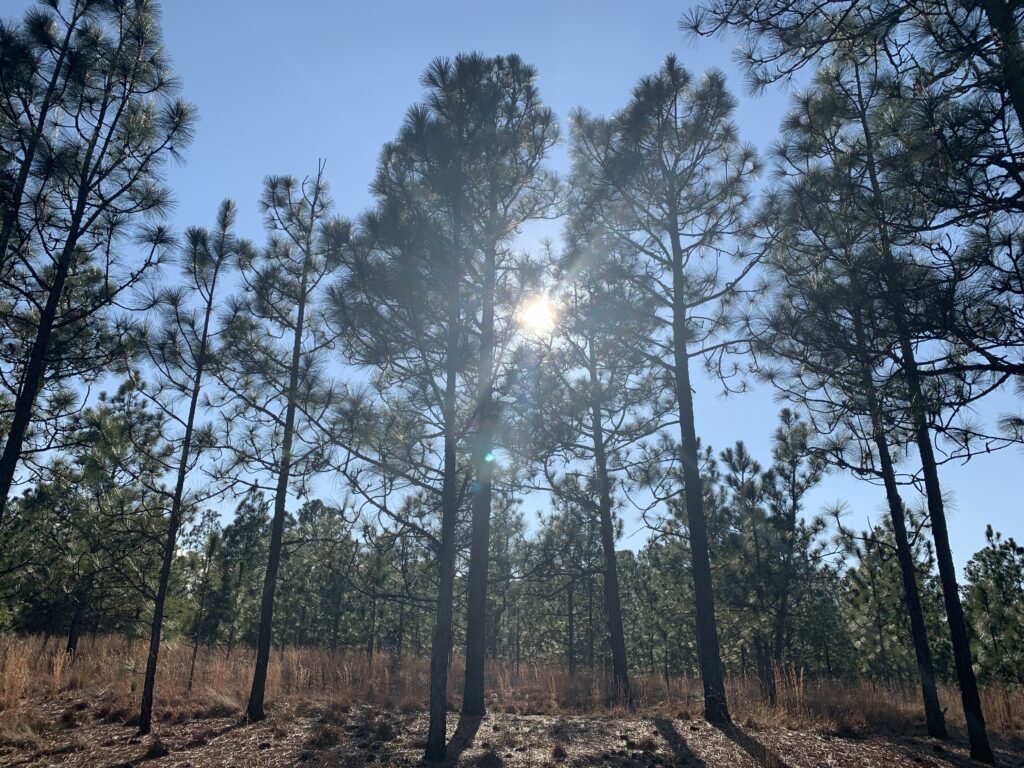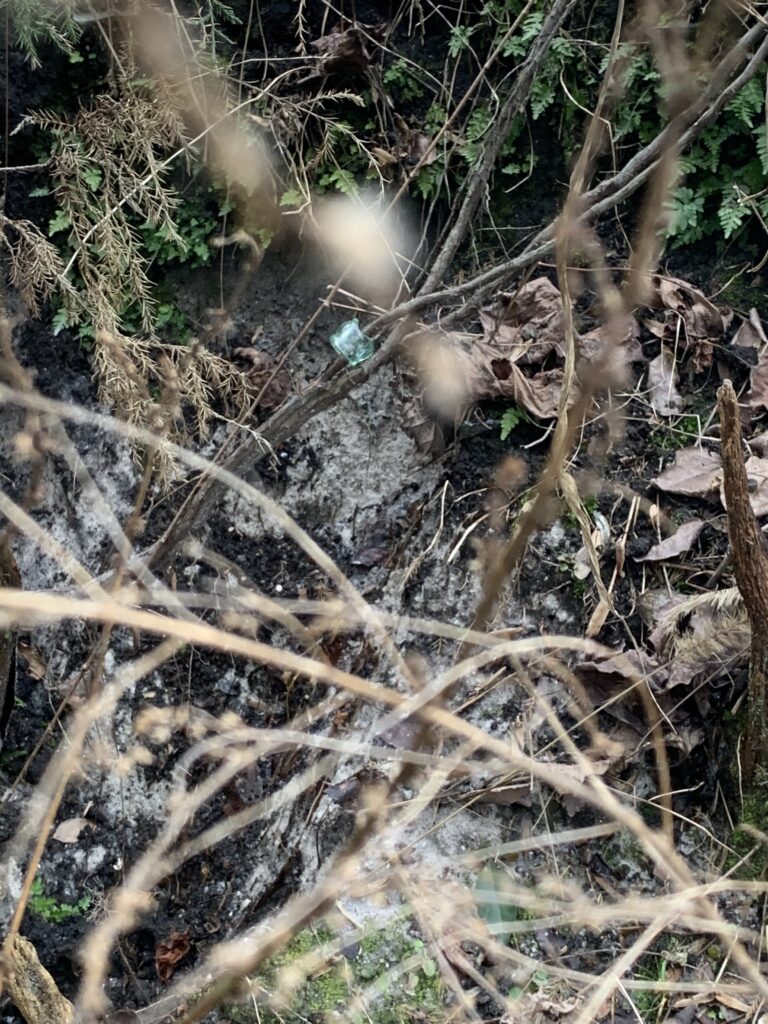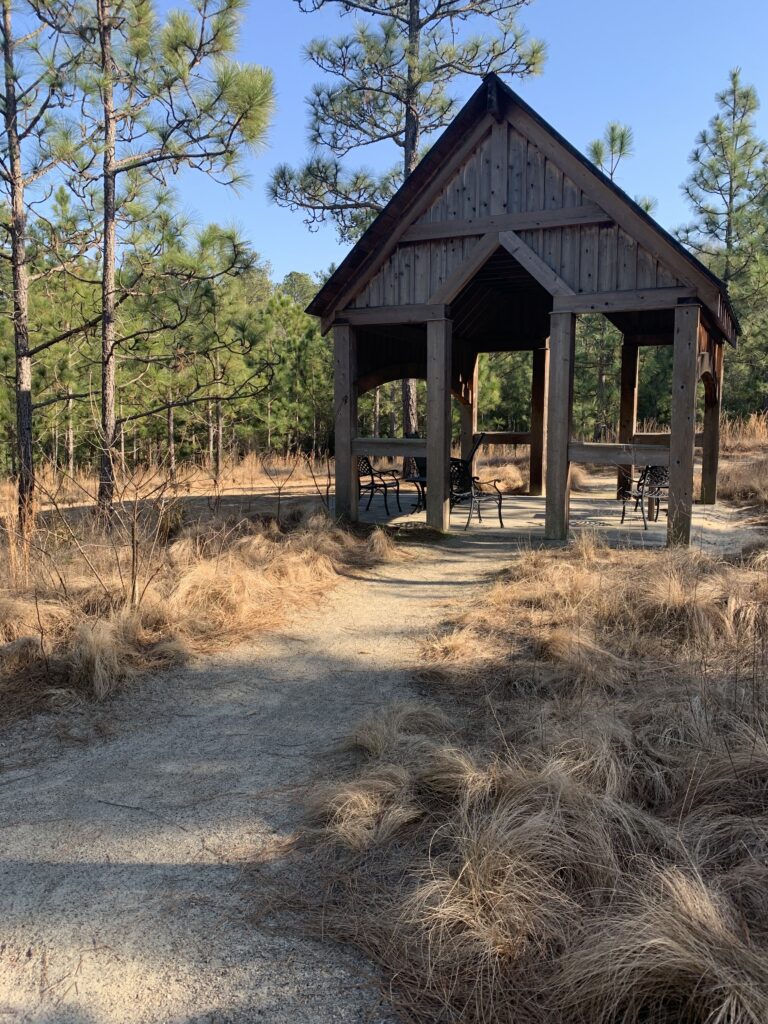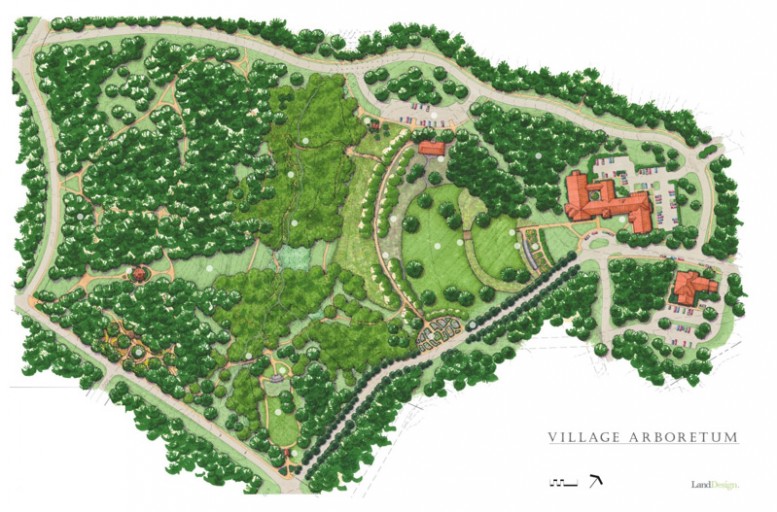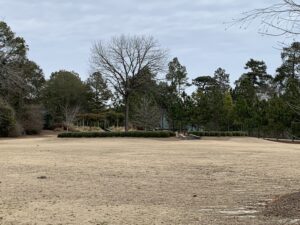Since the start of Pinehurst Arboretum people have rallied around its protection and growth as a natural space. Community is what keeps it alive and thriving. They take care of the area by cleaning and planting, they walk throughout the natural landscape keeping the space a part of the community.
Just a few weeks ago a volunteer group, led by my mother, started a cleanup of the Native Pollinator Garden, turning it from winter, with old dried out growth, to spring with bright new green grasses. Community came together to work on something that helps the area stay beautiful and useful for both humans and nature. I can only imagine that the next step is for the community to continue the growth of the newest section of Pinehurst Arboretum, whether from enjoying it or planting new flowers and bushes.

Even in the COVID-19 pandemic the natural spaces have been used to convene together. People ride their bikes, play with children and jog through the trails. They gather in these spaces to be together outdoors in unsettling times. One day I even saw a group of senior ladies hosting their book club at the Pavilion. Outdoors is no longer just a space for outdoor activities it is a space for all that come to seek out its beauty.
A new community event called the Flutterby Festival started in 2019. It was a festival to teach about pollination, butterflies and how they contribute to nature. Unfortunately the Flutterby Festival was not possible during 2020, but it has been said that it will be held this year in September. Bringing the community together with an official Pinehurst Arboretum event for the first time in over a year. At this event I have been asked to speak about Pinehurst Arboretum and I plan to use it as an opportunity to show how the natural space has benefited us as humans, along with the animals.

Over the years there have been lots of more community events, other festivals, concerts, art exhibitions, hikes with friends and those makeup for great memories that you can cherish. I even had my Girl Scout Ambassador bridging ceremony in Pinehurst Arboretum. But nothing is more satisfying than just being part of the community. Helping design a new section of Pinehurst Arboretum, helping fundraise for upkeep or even helping with the upkeep yourself and other people. It makes us a community to care about this natural environment and just spending time in that space is what brings the community closer.
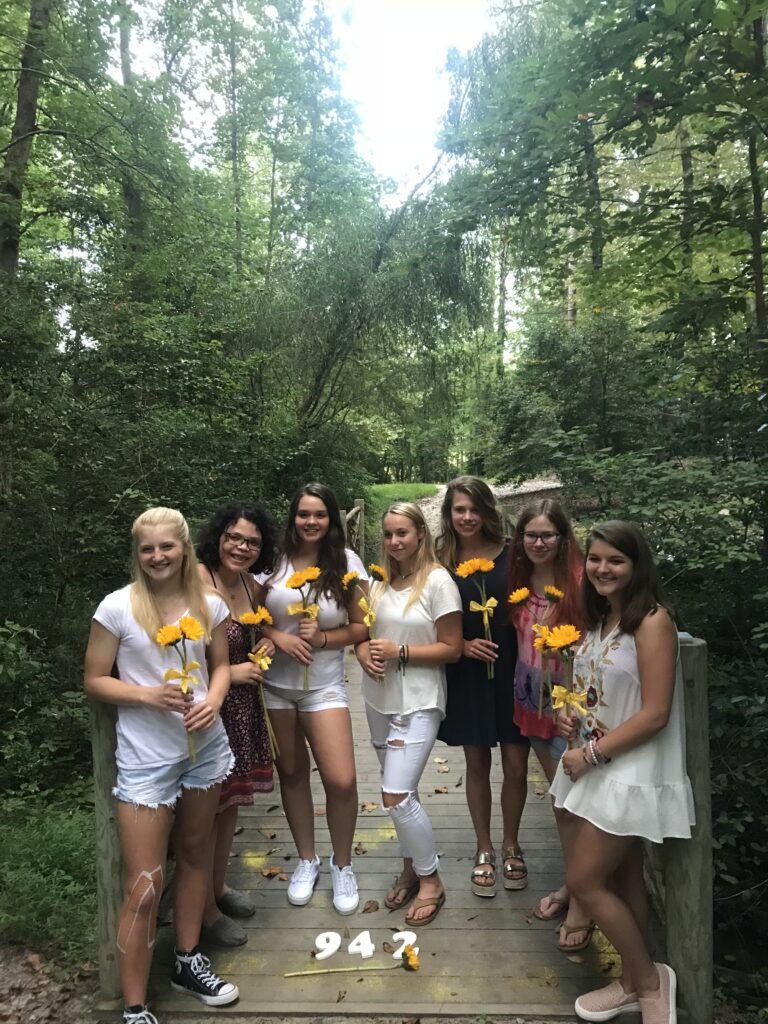
Being outdoors is more crucial than ever since it is often the only space majority of people feel comfortable since the COVID-19 pandemic. Natural spaces are becoming gathering areas for all activities and Pinehurst Arboretum provides that space. Along with natural beauty, the fresh air and ability to social distance is comforting for many. These outdoor spaces are the best way that we can commune with each other at the moment. But it also provides a feel into nature and lets people learn to love the space they are in as a community.
